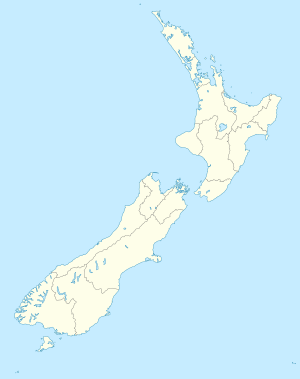Paparangi facts for kids
Quick facts for kids
Paparangi
|
|
|---|---|
|
Suburb
|
|
| Country | New Zealand |
| Local authority | Wellington City |
| Electoral ward |
|
| Area | |
| • Land | 126 ha (311 acre) |
| Population
(June 2023)
|
|
| • Total | 2,750 |
| Postcode(s) |
6037
|
|
|
||
Paparangi is a suburb in the northern part of Wellington, New Zealand. It's about 10 kilometers north of the city center. You can find it north-east of Johnsonville and south of Grenada.
The name Paparangi comes from the Māori language. It means "flat sky." This translation is given by the New Zealand Ministry for Culture and Heritage.
Paparangi has a small shopping area for local residents. It also has a primary school. The suburb was once made up of small farms. In the 1960s, it grew quickly. Many new houses were built each year. This made Paparangi a "dormitory suburb." This means many people live there but travel to Wellington for work or school.
Some streets in Paparangi are named after children. These were children who lived in the area. Or they were children of people who helped develop the suburb. For example, Cara Crescent, Mark Avenue, and Lynda Avenue are named after the children of Barry Beazley, a major developer.
In 1991, a new landfill opened nearby in Grenada. A special road was built to connect it to the main motorway. Later, a road extension was planned for Paparangi. This would give residents easier access to the motorway. Local groups were worried about more traffic. But after talking with residents, the Wellington City Council opened the "Mark Avenue Extension" in 2009. This road now connects Paparangi to the motorway.
Contents
History of Paparangi
Early Settlement and Farms
The Paparangi area was first settled by a farmer named Thomas Drake. He came from Devonshire in England. In 1861, he received a special land grant from the Crown. This gave him 332 acres of land. After he passed away, his wife, Ceres Selina Drake, sold the land back to the Crown in 1897.
The land was then divided into smaller farms. This was part of a plan by the Liberal Government. The Prime Minister at the time was Richard Seddon. His plan helped working people get land. They could lease a small section of about 2 hectares (5 acres). On these farms, they could grow fruits and vegetables. They could also keep animals like pigs, bees, and chickens.
In the 1920s and 1930s, Paparangi had several dairy farms. These farms supplied milk to Wellington city. One farmer, Sam Styles, had a 90-acre dairy farm called Ocean View Farm. It was located on Horokiwi Road. He supplied milk and cream. Sam Styles was also a local councilor. After he died in 1935, his farm was sold.
Paparangi Population
Who Lives in Paparangi?
Paparangi is a busy suburb. The area covers about 1.26 square kilometers. As of 2023, the estimated population is about 3,170 people. This means there are about 2,516 people living in each square kilometer.
In 2018, the population was 2,874 people. This was an increase of 135 people since 2013. And it was an increase of 210 people since 2006. There were 1,029 homes in Paparangi. There were slightly more females than males living in the area. The average age of people in Paparangi was 35.5 years old. This is a bit younger than the national average for New Zealand.
Cultural Backgrounds
Paparangi is home to people from many different backgrounds. In 2018, most residents (63.4%) were of European or Pākehā descent. About 10.2% identified as Māori. There were also people from Asian backgrounds (27.6%) and Pasifika backgrounds (6.3%). About 34.2% of people in Paparangi were born outside of New Zealand. This is higher than the national average.
Beliefs and Education
When asked about their religious beliefs in 2018, many people (46.6%) said they had no religion. About 35.3% identified as Christian. Other religions practiced included Hindu, Muslim, and Buddhist.
Many adults in Paparangi have a good education. About 32.8% of people aged 15 or older had a bachelor's degree or higher. The average income in Paparangi was $39,500. This was higher than the national average of $31,800. Most adults in Paparangi work full-time (56.4%).
Education in Paparangi
Paparangi School is the local primary school. It teaches students from Year 1 to Year 6. It is a co-educational school, meaning both boys and girls attend. As of 2024, the school has about 200 students.


